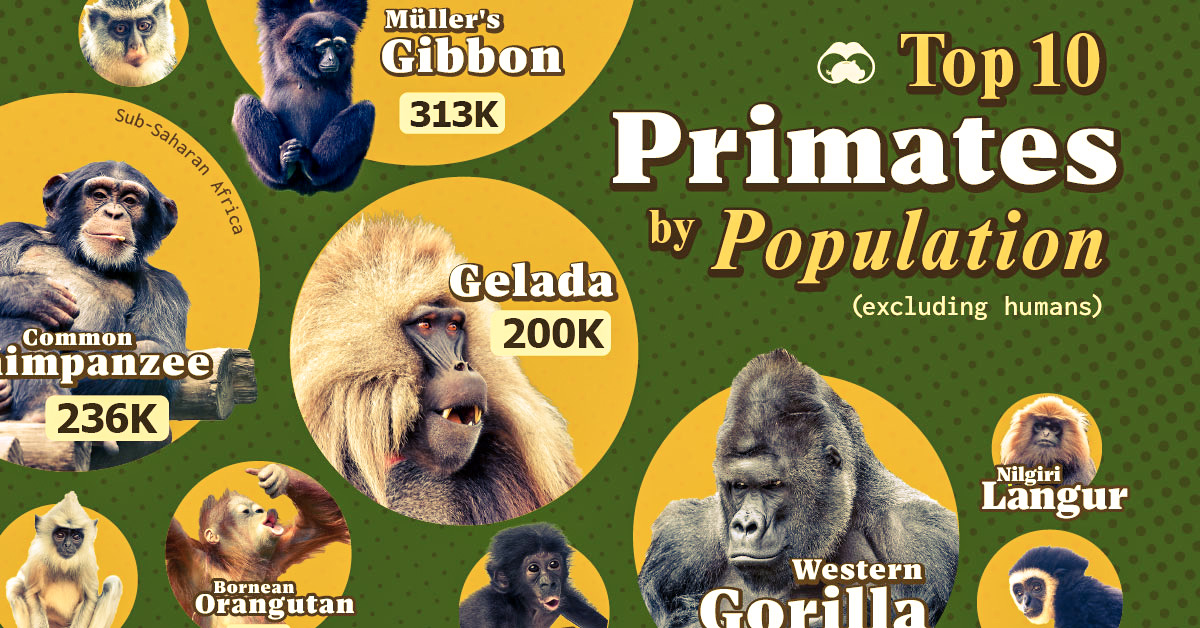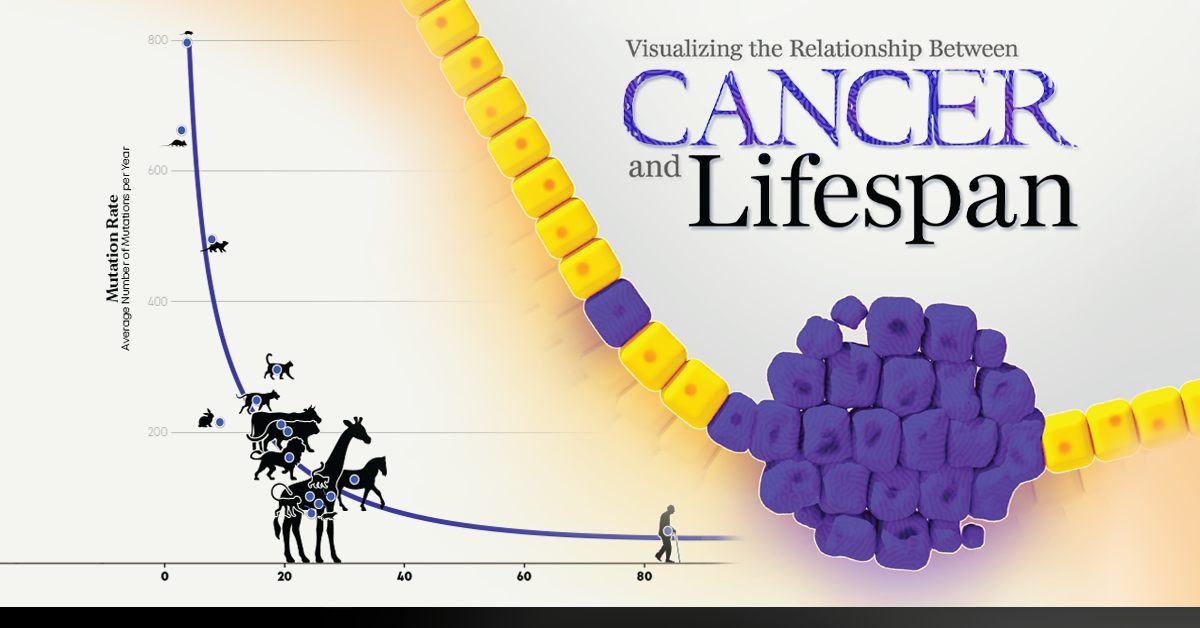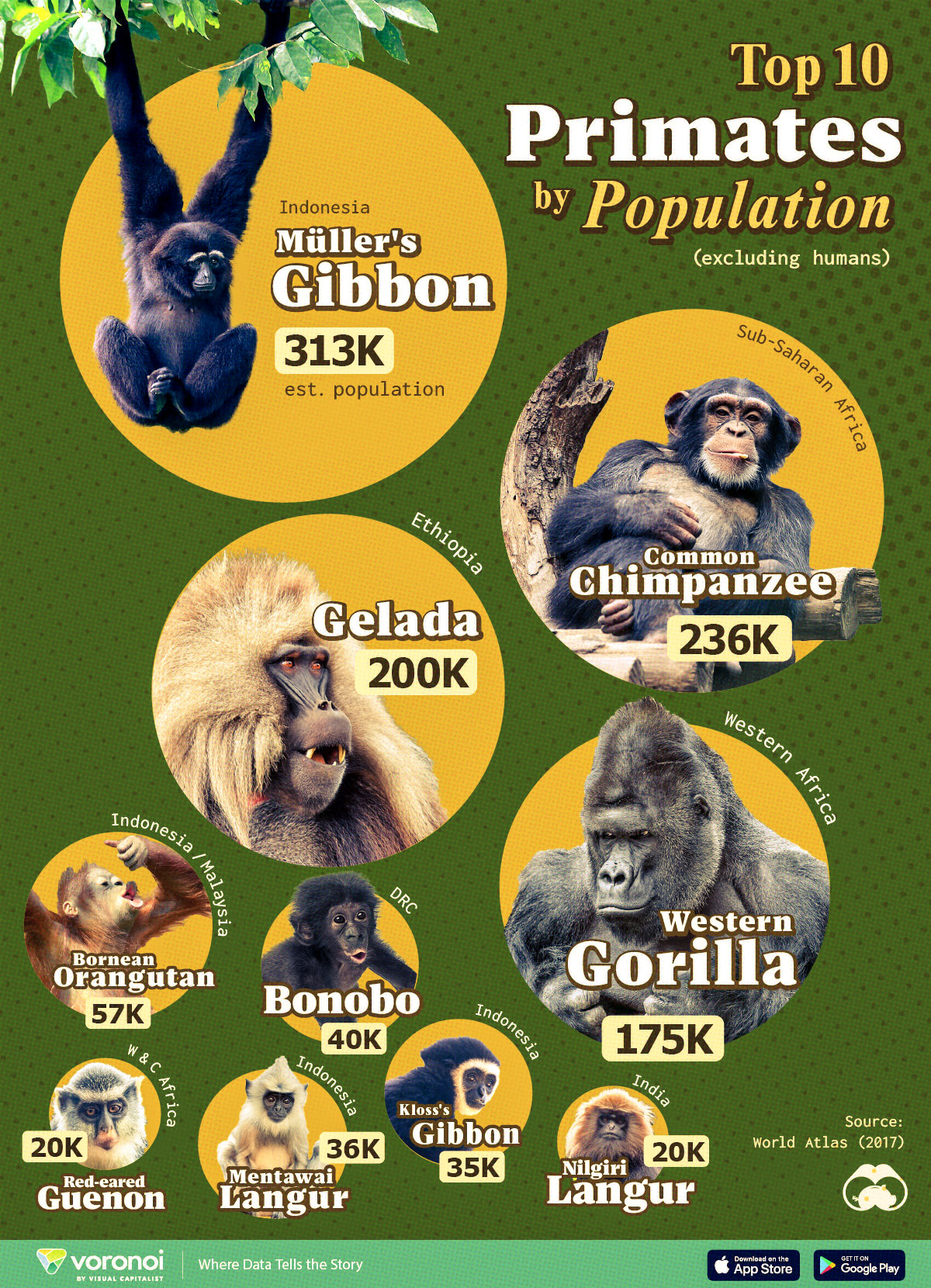Science
Visualizing the Relationship Between Cancer and Lifespan

A Newfound Link Between Cancer and Aging?
A new study in 2022 reveals a thought-provoking relationship between how long animals live and how quickly their genetic codes mutate.
Cancer is a product of time and mutations, and so researchers investigated its onset and impact within 16 unique mammals. A new perspective on DNA mutation broadens our understanding of aging and cancer development—and how we might be able to control it.
Mutations, Aging, and Cancer: A Primer
Cancer is the uncontrolled growth of cells. It is not a pathogen that infects the body, but a normal body process gone wrong.
Cells divide and multiply in our bodies all the time. Sometimes, during DNA replication, tiny mistakes (called mutations) appear randomly within the genetic code. Our bodies have mechanisms to correct these errors, and for much of our youth we remain strong and healthy as a result of these corrective measures.
However, these protections weaken as we age. Developing cancer becomes more likely as mutations slip past our defenses and continue to multiply. The longer we live, the more mutations we carry, and the likelihood of them manifesting into cancer increases.
A Biological Conundrum
Since mutations can occur randomly, biologists expect larger lifeforms (those with more cells) to have greater chances of developing cancer than smaller lifeforms.
Strangely, no association exists.
It is one of biology’s biggest mysteries as to why massive creatures like whales or elephants rarely seem to experience cancer. This is called Peto’s Paradox. Even stranger: some smaller creatures, like the naked mole rat, are completely resistant to cancer.
This phenomenon motivates researchers to look into the genetics of naked mole rats and whales. And while we’ve discovered that special genetic bonuses (like extra tumor-suppressing genes) benefit these creatures, a pattern for cancer rates across all other species is still poorly understood.
Cancer May Be Closely Associated with Lifespan
Researchers at the Wellcome Sanger Institute report the first study to look at how mutation rates compare with animal lifespans.
Mutation rates are simply the speed at which species beget mutations. Mammals with shorter lifespans have average mutation rates that are very fast. A mouse undergoes nearly 800 mutations in each of its four short years on Earth. Mammals with longer lifespans have average mutation rates that are much slower. In humans (average lifespan of roughly 84 years), it comes to fewer than 50 mutations per year.
The study also compares the number of mutations at time of death with other traits, like body mass and lifespan. For example, a giraffe has roughly 40,000 times more cells than a mouse. Or a human lives 90 times longer than a mouse. What surprised researchers was that the number of mutations at time of death differed only by a factor of three.
Such small differentiation suggests there may be a total number of mutations a species can collect before it dies. Since the mammals reached this number at different speeds, finding ways to control the rate of mutations may help stall cancer development, set back aging, and prolong life.
The Future of Cancer Research
The findings in this study ignite new questions for understanding cancer.
Confirming that mutation rate and lifespan are strongly correlated needs comparison to lifeforms beyond mammals, like fishes, birds, and even plants.
It will also be necessary to understand what factors control mutation rates. The answer to this likely lies within the complexities of DNA. Geneticists and oncologists are continuing to investigate genetic curiosities like tumor-suppressing genes and how they might impact mutation rates.
Aging is likely to be a confluence of many issues, like epigenetic changes or telomere shortening, but if mutations are involved then there may be hopes of slowing genetic damage—or even reversing it.
While just a first step, linking mutation rates to lifespan is a reframing of our understanding of cancer development, and it may open doors to new strategies and therapies for treating cancer or taming the number of health-related concerns that come with aging.
Science
What Are the 10 Most Common Primates in the World?
This list excludes humans, who would otherwise lead the ranks of most common primates by a significant margin.

What Are the 10 Most Common Primates in the World?
This was originally posted on our Voronoi app. Download the app for free on Apple or Android and discover incredible data-driven charts from a variety of trusted sources.
The word ‘primate’ traces its roots back to the Latin word ‘primas,’ meaning ‘of first rank’ or the highest order in the animal kingdom. This classification intuitively reflects humans’ fascination with the many species who are our closest cousins.
In this graphic, we visualize the top 10 species of primates, ranked by their estimated global population. This data comes from WorldAtlas, and was last updated in 2017.
Given the difficult nature of tracking wild animals, these numbers should be treated as approximations rather than exact figures.
Ranked: Top 10 Primates, by Population
At the top of the list, there are more than 300,000 Müller’s Bornean Gibbons in the world, found on the island of Borneo in Indonesia and Malaysia.
The larger gibbon family consists of around 20 species of small apes found swinging through Southeast Asian rainforests. These acrobatic primates are known for their loud calls, impressive agility, and monogamous family structures.
Despite their ape status, they differ from great apes by being smaller and lacking nests.
| Rank | Monkey | Region of Origin | Estimated Population (as of 2017) |
|---|---|---|---|
| 1 | Muller's Bornean Gibbon | 🇮🇩 Indonesia | 312,500 |
| 2 | Common Chimpanzee | 🌍 Sub-Saharan Africa | 236,200 |
| 3 | Gelada | 🇪🇹 Ethiopia | 200,000 |
| 4 | Western Gorilla | 🌍 Western Africa | 175,000 |
| 5 | Bornean Orangutan | 🇮🇩 Indonesia / 🇲🇾 Malaysia | 57,000 |
| 6 | Mentawai Langur | 🇮🇩 Indonesia | 36,000 |
| 7 | Bonobo | 🇨🇩 DRC | 39,750 |
| 8 | Kloss's Gibbon | 🇮🇩 Indonesia | 35,000 |
| 9 | Red-eared Guenon | 🌍 West & Central Africa | 20,000 |
| 10 | Nilgiri Langur | 🇮🇳 India | 20,000 |
Ranked second, the Common Chimpanzee can be found in the savannas and forests of sub-Saharan Africa. A subspecies—the Eastern Chimpanzees in Tanzania’s Gombe National Park—were the primary focus of noted biologist Jane Goodall’s pioneering research in the 1960s.
Despite their apparent numbers, chimpanzees are now classified as an endangered species by the UN, their survival threatened by habitat loss, poaching, and disease.
All the way across, in Ethiopia, the Gelada species is the third most populous primate on the planet. Their short, stump fingers make them adept rock climbers—useful for navigating the Semien mountains they call home.
At fourth place, the Western Gorilla, also found in Africa, is the last primate species with a population above 100,000. The Western Gorillas are a little smaller than their Eastern counterparts, who are the largest living primates.
See More Animal Graphics From Visual Capitalist
If you’re curious to learn more about animals, check out this graphic that ranks the top speeds of the world’s fastest animals.
-

 Real Estate2 weeks ago
Real Estate2 weeks agoVisualizing America’s Shortage of Affordable Homes
-

 Technology1 week ago
Technology1 week agoRanked: Semiconductor Companies by Industry Revenue Share
-

 Money2 weeks ago
Money2 weeks agoWhich States Have the Highest Minimum Wage in America?
-

 Real Estate2 weeks ago
Real Estate2 weeks agoRanked: The Most Valuable Housing Markets in America
-

 Business2 weeks ago
Business2 weeks agoCharted: Big Four Market Share by S&P 500 Audits
-

 AI2 weeks ago
AI2 weeks agoThe Stock Performance of U.S. Chipmakers So Far in 2024
-

 Misc2 weeks ago
Misc2 weeks agoAlmost Every EV Stock is Down After Q1 2024
-

 Money2 weeks ago
Money2 weeks agoWhere Does One U.S. Tax Dollar Go?
















